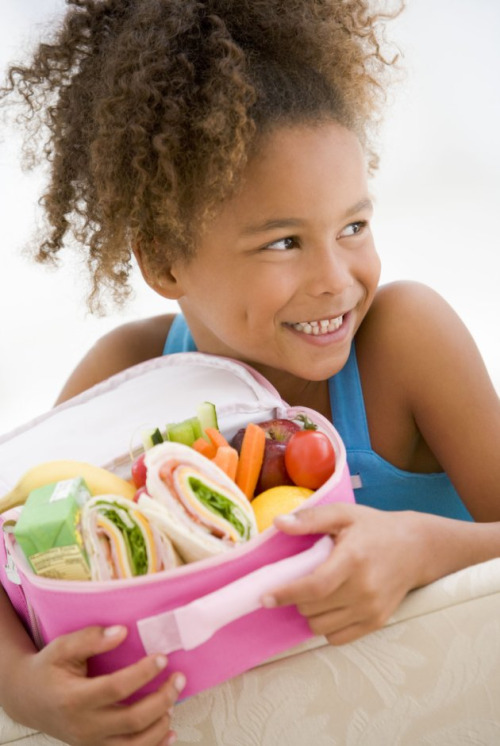School rules on what can and can’t be included in lunchboxes can be confusing. [Photo: Rex]
Scotch eggs hit the headlines recently, after being classed too unhealthy for school lunchboxes.
The egg-based snack was confiscated from various pupils after a school in Colchester controversially asked teachers to look through their class’ lunches and take out anything that they thought was unhealthy.
But is it all that unusual for teachers to decide what their students can and can’t eat at school? On parenting forums, plenty of mums and dads complain about their child’s school sending their little one home with a note about the contents of their lunchbox, explaining that certain items aren’t healthy enough.
The guidelines on what can and can’t be included in a packed lunch are confusing, to say the least. They’re different at every school, but most don’t allow cakes, biscuits, flavoured water, chocolate and crisps.
Instead, schools encourage parents to pack at least one portion of fruit of vegetables for their child and that their little one drinks water. While some parents deem this too controlling of the school, it’s a great way to help tackle the growing child obesity levels in the UK.
Currently, only around one in a 100 packed lunches in England meet children’s nutritional needs - and children who have them daily consume more foods like meat pies, pastries, sugary drinks and snacks high in fat and salt than pupils having school meals.
But while not always the healthiest option, packed lunches can be more economical and give parents a chance to control exactly what their child eats. After all, not all cooked lunches are healthy, either.
Packed Lunch Ideas
According to NHS choices, a balanced packed lunch should include some starchy foods, such as bread or pasta, protein, dairy, vegetables and a portion of fruit. But it doesn’t have to be all soggy sandwiches and carrot sticks.
There are plenty of ways that you can jazz up your little one’s lunch so she actually looks forward to eating it, as Lunchbox Doctor Jenny Tschiesche explains.
1. Provide water rather than fruit juice or squash in your child’s lunchbox. Try adding real fruit to the water for something different e.g. lemon or strawberries. Keep cool with ice-cubes added at the start of the day or freeze the water overnight.
2. Sweeten natural yogurt with fruit/fruit purée instead of buying already sweetened yogurt.
3. Wholegrain crackers or oatcakes will keep your child going for longer than white bread. Try serving with cheese and grapes or tuna and cucumber.
4. Calcium is important in kids’ lunchboxes. Include cubes of cheese or yoghurt, and seeds and green veg are also great sources of calcium. Try adding pesto to sandwiches or pasta salad for added calcium.
5. Protein helps build and repair bodies and comes from animal sources, such as meat, fish and eggs, and plant sources such as pulses and lentils. Include a variety in lunchboxes. For example, a hummus dip one day, a boiled egg the next, then a tuna sandwich and a chicken drumstick the day after. You can add an icepack to keep this cool.
6. A healthy lunchbox can include raw vegetables that come ready to eat, but also try baked foods with vegetables, such as sweet potato muffins.
7. Mini versions of vegetables are great with children – baby beetroots, mini sweetcorn, cherry tomatoes. The size difference is sometimes enough to keep children intrigued.
8. Soup – add lentils for thickness and protein. These can be served in a mini thermos flask and eaten at school whilst still warm.
9. Children love colour. It’s why foods for children are in colourful packaging. A bento box style lunchbox can make real food look great and appealing. A box containing fresh fruit, vegetables, yogurt, in sections is likely to get eaten where copious amounts of foil or cling film wrapped components won’t.
10. Try lunchbox bingo. The idea behind this is that your child can design their own packed lunches but they must be nutritionally balanced. Each day there must be each of the following groups represented in their lunch - protein, carbohydrate, calcium, fruit and drink. You can use the blank menu plan below to get you started. They like the simplicity, and it helps to plan and shop.
Fuente: alisoncoldridge.tumblr.com
